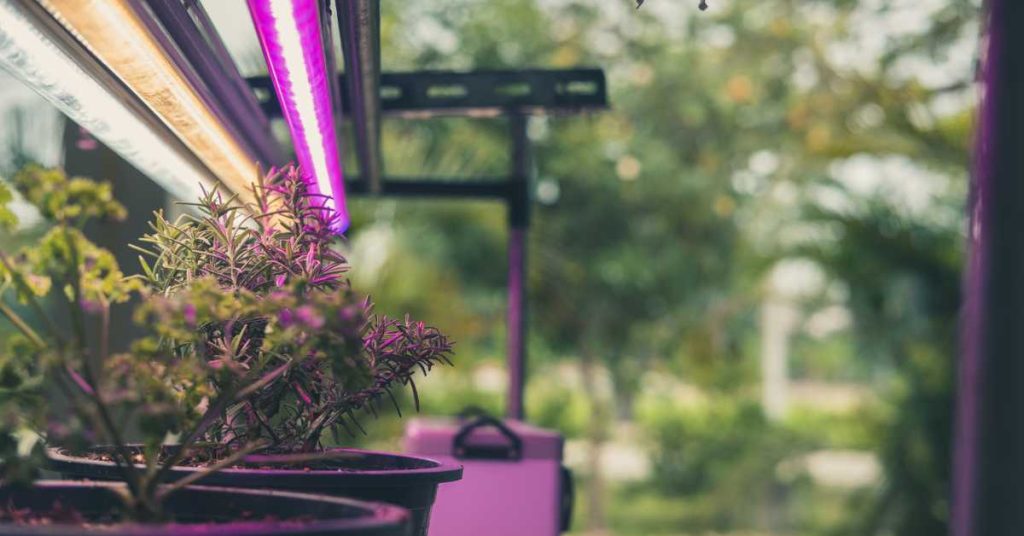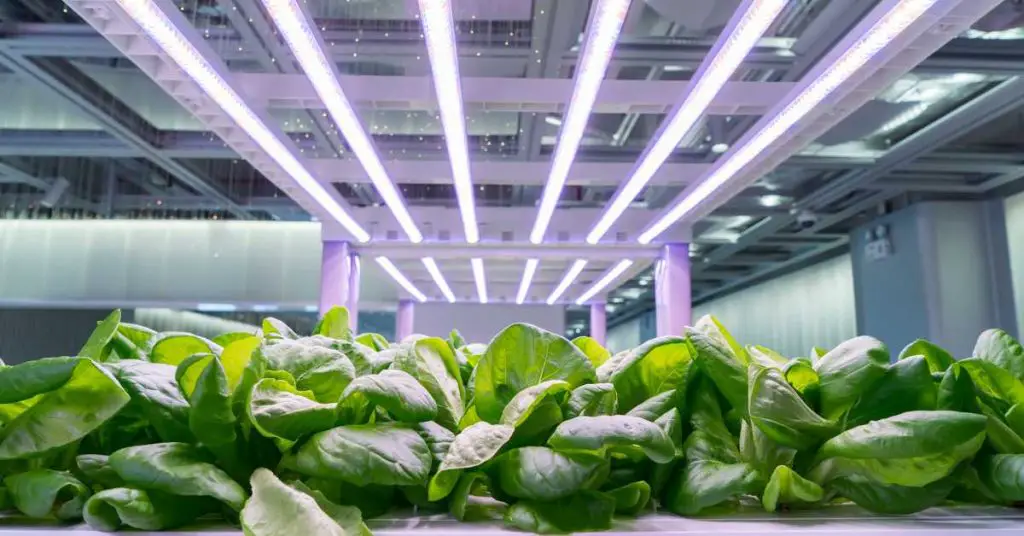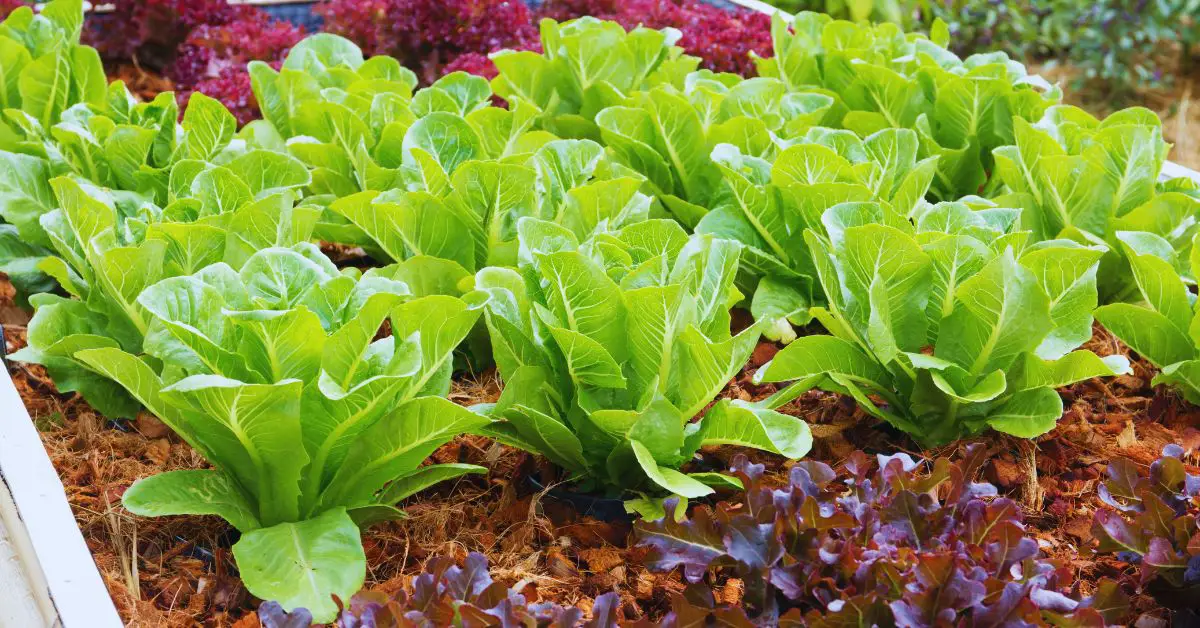Are you an aspiring gardener trying to figure out whether to rely on the sun or artificial lighting for your plants? The debate between grow light vs. sun has been ongoing for years, and it can be overwhelming to decide which one is better for your garden. But fear not, because in this article, we will explore the properties of both sunlight and grow lights and help you determine which one is best for your plants.
First, let’s discuss the properties of sunlight. As you may already know, sunlight is a natural source of light that provides plants with energy through photosynthesis. Sunlight contains different wavelengths of light, including ultraviolet (UV), visible, and infrared (IR) light. These wavelengths play a crucial role in the growth and development of plants, from germination to flowering.
However, sunlight can also be too harsh for some plants, especially those that require filtered light or shade.
What are the properties of sunlight?
You may not realize it, but the natural properties of sunlight are essential to the health and growth of your beloved greenery. Sunlight is made up of a spectrum of colors, each with different wavelengths and energy levels.
When sunlight hits a plant, it is either absorbed, reflected, refracted, diffracted, or scattered. These properties all play a crucial role in helping your plants thrive.
Absorption is perhaps the most important property of sunlight for plants. Chlorophyll, the molecule responsible for photosynthesis, absorbs certain wavelengths of light and uses the energy to convert carbon dioxide and water into glucose and oxygen. Without sunlight, plants cannot produce the energy they need to survive.
Reflection occurs when sunlight bounces off a plant’s surface, while refraction happens when light passes through a plant’s cells and bends. Diffraction and scattering refer to the ways in which sunlight spreads out as it passes through a plant’s leaves and branches.
Overall, sunlight is a vital component for the growth and survival of your plants. By understanding the different properties of sunlight, you can better care for your greenery and ensure that they receive the right amount of light they need to thrive.
So, next time you step outside and feel the warmth of the sun on your skin, remember that your plants are also benefiting from their natural properties.

What are the properties of grow lights?
Step into the world of artificial sunshine and let these electric rays energize your green companions, providing them with the necessary nutrients to thrive and reach their full potential.
Grow lights, also known as plant lights, are artificial light sources that replicate the sun’s natural light spectrum. They are designed to provide plants with the right wavelength and intensity of light they need for photosynthesis and growth.
To better understand the properties of grow lights, here are some key points to keep in mind:
- Light Spectrum – Grow lights come in different types, each with a unique light spectrum. The most common types are Full Spectrum, which mimic the natural sunlight, and Red and Blue Spectrum, which are ideal for promoting plant growth during the vegetative and flowering stages.
- Light Intensity – The intensity of light emitted by grow lights is measured in lumens and PAR. PAR, or Photosynthetically Active Radiation, measures the amount of light that plants can use for photosynthesis. Higher PAR values mean more intense light and better plant growth.
- Energy Efficiency and Cost Comparison – Grow lights are designed to be energy-efficient, consuming less electricity than traditional lighting sources. They’re also cost-effective in the long run, as they last longer and require less maintenance than natural sunlight.
In summary, grow lights are a great alternative to natural sunlight for indoor gardening. They provide plants with the right spectrum and intensity of light they need for optimal growth and development. With their energy efficiency and cost-effectiveness, they’re a smart investment for any plant enthusiast looking to take their indoor gardening to the next level.

Why do plants need light to grow?
Plants crave the warmth and energy of the sun, but when that’s not possible, artificial light sources can provide the necessary nourishment for their growth and vitality.
The process of photosynthesis, which is essential for plant growth, is triggered by light energy. The light spectrum that plants require for photosynthesis is specifically between 400 to 700 nanometers.
It’s important to note that different plants have varying light requirements, and the intensity and duration of exposure also play a significant role in plant growth mechanisms. Light intensity factors such as the distance between the plant and the light source, the wattage of the bulb, and the duration of exposure to the light all affect plant growth.
Additionally, phototropism effects, or the way plants bend or grow towards the light, are also influenced by light intensity and duration. These factors are crucial in determining the performance of grow lights and ensuring that plants receive the optimal amount of light for healthy growth.
In conclusion, plants require light for photosynthesis, growth, and development. Understanding the different light requirements of plants and the factors that affect their growth is essential in providing them with adequate light sources.
Whether you choose natural sunlight or artificial grow lights, ensuring that your plants receive the right amount of light intensity, duration, and spectrum is key to their success.
What are the differences between sunlight and grow lights when it comes to growing food?
Bask in the brilliance of the bountiful benefits of both beams for boosting your bounty. When it comes to indoor gardening, you have two options for providing the necessary light to your plants: sunlight or grow lights.
The light spectrum of these two sources is different. Sunlight provides a full spectrum of light, including ultraviolet and infrared, while grow lights provide a limited spectrum unless they are labeled as full spectrum. However, grow lights can be adjusted to provide specific wavelengths of light that are most beneficial for plant growth.
Plant growth is dependent on photosynthesis, which is the process of using light energy to produce food for the plant. Sunlight has a higher photosynthesis efficiency compared to grow lights.
This is because sunlight provides a wider spectrum of light, which allows for optimal photosynthesis.
However, if you choose to use grow lights, you can adjust the light spectrum to match the specific needs of your plants. This will result in higher photosynthesis efficiency and better plant growth.
One of the main advantages of using grow lights is energy consumption. Sunlight is free, but it’s not always available or suitable for indoor gardening. Using grow lights allows you to control the amount and duration of light your plants receive. This means you can optimize energy consumption and reduce your electricity bill.
Moreover, grow lights emit less heat compared to sunlight, which can be beneficial for indoor gardening in hot climates.

Are grow lights as good as sunlight?
You’re wondering if using artificial light for indoor gardening can be just as effective as relying on natural sunlight. Well, the answer is it depends on the type of grow light you use and the specific needs of your plants.
Grow light efficiency varies depending on the type of bulb and its wattage. Some bulbs are more efficient than others, and some are better suited for certain types of plants.
When it comes to plant growth rates, sunlight is the clear winner. Plants grown in natural sunlight tend to grow faster and produce more fruit than those grown under artificial light. However, if you’re living in an area where sunlight is scarce or if you don’t have access to an outdoor space, using grow lights can be a great alternative.
With the right setup, you can grow healthy plants indoors and still enjoy fresh produce all year round. One of the biggest advantages of using grow lights for indoor gardening is that you have more control over your plants’ health. You can adjust the intensity and duration of the light, as well as the color spectrum, to meet the specific needs of your plants.
While the initial cost of setting up a grow light system may be higher than relying on natural sunlight, in the long run, it can be more cost-efficient. Plus, you won’t have to worry about weather fluctuations or pests affecting your crops.
So, if you’re looking for a way to grow healthy plants indoors, grow lights can be a great option.
What is a full spectrum grow light?
If you’re interested in taking your indoor gardening to the next level and want to mimic the full range of colors and wavelengths found in natural sunlight, full-spectrum grow lights may be the perfect option for you. These lights are designed to emit light that is similar to the sun’s spectrum, which is essential for plant growth.
Full spectrum grow lights are a popular choice for indoor gardening because they can provide the ideal conditions for plants to thrive and grow.
One of the main benefits of using full spectrum grow lights is that they can provide the right amount of light for your plants to grow and thrive, even in low-light conditions. However, one of the drawbacks of using full spectrum grow lights is their cost, as they can be more expensive than other types of grow lights.
There are many different types of full spectrum grow lights available on the market, each with their own set of features and benefits. Some of the most common types of full spectrum grow lights include LED, fluorescent, and HID.
When choosing a full spectrum grow light, it’s important to consider factors such as efficiency, lifespan, and cost. By doing so, you can ensure that you’re getting the best value for your money and providing your plants with the optimal conditions for growth and development.
Our favorite grow light right now is the ViparSpectra XS2000. I absolutely love this grow light and use it to start seeds and grow peppers and tomatoes indoors all year long.

Grow light vs sunlight: which is better for your garden?
Imagine stepping into your garden and feeling the warm rays of the sun on your skin, but have you ever wondered how grow lights compare to natural sunlight for your indoor plants?
Let’s take a closer look at the debate between grow light vs sunlight: which is better for your garden?
When it comes to cost effectiveness, sunlight wins hands down. It’s free, abundant, and doesn’t require any additional equipment or energy consumption. However, if you live in an area with limited sunlight or have a shaded indoor space, grow lights may be a better option. They can provide the necessary light spectrum for plant growth and can be adjusted to the specific needs of your plants.
The impact on plant growth rate is another important factor to consider. While sunlight is the most natural and effective way to promote growth, grow lights can also provide similar results. Depending on the type of grow light used, it can mimic the intensity and spectrum of natural sunlight.
However, it’s important to note that some plants may require a specific type of light spectrum to thrive, so it’s important to research which grow light is best for your specific plant.
Overall, choosing between grow lights vs sunlight will depend on your specific situation and the needs of your plants.
Can you use grow lights to grow enough food?
So, you’re wondering whether grow lights can be used to grow enough food? Well, it depends on what kind of food you’re trying to grow and how much space you have.
If you’re looking to start indoor farming, grow lights can be a great option for you. With the right setup, you can grow a variety of crops all year round, regardless of the weather outside. One of the biggest advantages of indoor farming with grow lights is the potential yield.
Unlike traditional outdoor gardening, you have more control over the environment and can optimize conditions to maximize your harvest. Additionally, you can grow crops that may not be able to survive in your local climate, giving you more variety in your diet.
However, it’s important to note that indoor farming with grow lights can consume a lot of energy and may not be cost-efficient for everyone. Another factor to consider is plant nutrients. When plants are grown outside, they have access to natural sunlight and a variety of nutrients in the soil.
When growing with grow lights, you need to ensure that your plants are receiving all the necessary nutrients to thrive. This may require additional supplements or specialized soil.
Nevertheless, indoor farming with grow lights can be a great way to supplement your diet and reduce your carbon footprint by growing your own food.
Frequently Asked Questions
How much does it cost to set up a grow light system for indoor plants?
Are you looking to set up a grow light system for your indoor plants? The initial investment can vary depending on the size of your setup, but you can find affordable options that won’t break the bank.
When it comes to energy consumption, LED grow lights are the most efficient and cost-effective option. While maintenance costs can add up over time, it’s important to keep your lights clean and replace them when needed to ensure optimal plant growth.
One advantage of grow lights is the ability to control the light spectrum, giving you the flexibility to adjust the lighting to your plant’s specific needs. With the right setup, your plants can experience a growth rate equivalent to or even better than being exposed to natural sunlight.
So if you’re looking to create a thriving indoor garden, investing in a grow light system may be the way to go.
Can grow lights be harmful to plants if used incorrectly?
When it comes to using grow lights for your indoor plants, it’s important to be mindful of potential risks. Overheating concerns can arise if the lights are left on for too long or if they’re not properly ventilated.
It’s also important to consider the light spectrum effects on your plants, as different wavelengths can impact growth and flowering. Photoperiod manipulation can be a useful tool for encouraging certain behaviors in your plants, but it’s important to do so carefully.
Choosing the right intensity is crucial for optimal growth, as too much or too little light can be harmful. Finally, when deciding between LED vs. fluorescent options, consider your specific needs and preferences.
By being mindful of these factors, you can ensure that your grow light system is safe and effective for your plants.
Are there any types of plants that do not require artificial light to grow indoors?
Imagine a garden that thrives under the warm sun, where each plant is carefully nurtured and cared for.
Now picture a room where the same plants grow, but instead of sunlight, they are illuminated by artificial light. While many plants require the sun’s rays to grow, there are some that can thrive indoors without it.
Herbs like mint, basil, and cilantro can grow well in a sunny window or under a grow light, as can succulents and cacti that are adapted to grow in arid environments. Bamboo also thrives in low light conditions, and orchids can do well with indirect light.
So, if you’re looking to bring the beauty of nature indoors and create a sense of belonging, consider these plants that can flourish without the sun’s help.
Can grow lights be used to supplement natural sunlight in outdoor gardens?
Looking to give your outdoor plants a boost? Outdoor supplementation with grow lights can help maintain consistent light intensity, which can lead to increased growth rate and overall plant health.
This is especially important during seasonal changes when the sun’s intensity may fluctuate. By using grow lights, you can provide your plants with the light they need to thrive, no matter the weather conditions.
Plus, with the added benefit of being able to control the duration and intensity of the light, you can tailor your supplementation to fit the specific needs of your plants. So why not give outdoor supplementation a try and watch your plants flourish?
How long do grow lights typically last before needing to be replaced?
Imagine having a trusted companion who always has your back, but just like any other partner, it needs some TLC to keep the relationship going. Grow lights are like that companion for your plants, providing them with the extra boost they need to thrive.
However, just like any other equipment, grow lights have a lifespan too. Longevity tips suggest that you should replace them every 12 to 18 months to maintain their performance effectiveness and energy efficiency.
Maintenance requirements vary depending on the type of grow light you have, but regardless of which one you choose, it’s essential to keep them clean and free from dust or debris. Remember, the better you care for your grow lights, the better they’ll care for your plants.
Conclusion
So, which is better for your plants: grow lights or sunlight? The answer is both!
While sunlight is the natural source of light that plants have evolved to thrive on, grow lights can be a great supplement when natural light is limited. With full spectrum grow lights, you can mimic the natural light spectrum and provide your plants with all the wavelengths they need to grow.
In the end, it all comes down to your specific gardening situation and preferences. Whether you choose to rely solely on sunlight or incorporate grow lights into your setup, the most important thing is to make sure your plants are getting the light they need to flourish.
As the saying goes, “the proof is in the pudding,” or in this case, the blooms and harvests of your garden.





